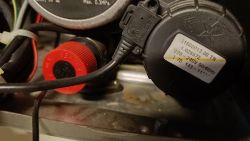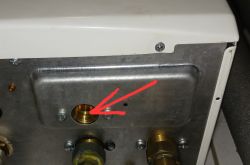I have a problem with circulation pressure. For a long time after the night, when the stove was turned off (night temperature lowered), the pressure in the circuit dropped below 1 bar and it did not start. After refilling, it worked normally until night... There were no leaks in the circuit. The service technician found damage to the expansion vessel, yesterday he replaced it with a new original one, this morning error E10 again and in the circuit 0.
What can be? The new vessel is damaged or the diagnosis is incorrect?
Maybe after replacing it, the system needs to be replenished for some time?
What can be? The new vessel is damaged or the diagnosis is incorrect?
Maybe after replacing it, the system needs to be replenished for some time?
Moderated By ArturAVS:
In the future, please start your own topic and do not link to someone else`s where the discussion has ended long ago. Thank you.





